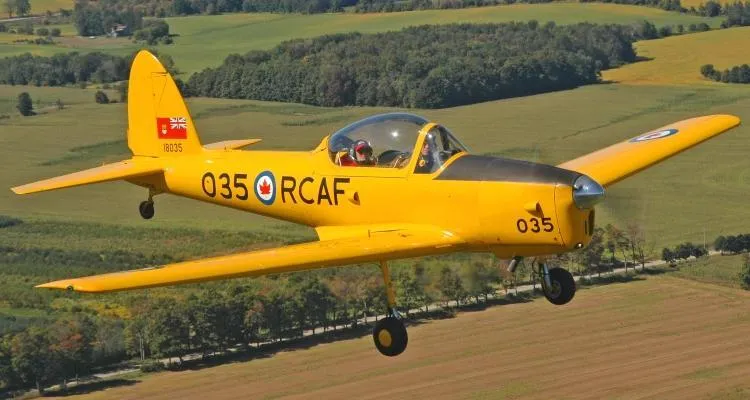de Havilland Canada Chipmunk

Canadian Warplane Heritage Museum
The de Havilland Canada DHC-1 Chipmunk is a tandem, two-seat, single-engined primary trainer aircraft designed and developed by Canadian aircraft manufacturer de Havilland Canada. It was developed shortly after the Second World War and sold in large numbers during the immediate post-war years, being typically employed as a replacement for the de Havilland Tiger Moth biplane.
The Chipmunk was the first postwar aviation project conducted by de Havilland Canada. It performed its maiden flight on 22 May 1946 and was introduced to operational service that same year. During the late 1940s and 1950s, the Chipmunk was procured in large numbers by military air services such as the Royal Canadian Air Force (RCAF), Royal Air Force (RAF), and several other nations' air forces, where it was often utilised as their standard primary trainer aircraft. The type produced under licence by de Havilland in the United Kingdom, who would produce the vast majority of Chipmunks, as well as by OGMA (Oficinas Gerais de Material Aeronáutico) in Portugal.
The type was slowly phased out of service beginning in the late 1950s, although in the ab initio elementary training role, this did not happen in the Royal Air Force until 1996, when it was replaced by the Scottish Aviation Bulldog. Wikipedia
CASPIR Aircraft Groups:
RCAF On Strength (113), RCAF 400 Squadron (3), Canadian Aircraft Losses (7)Chipmunk 2 18007
Was originally registered as CF-CYV for manufacturer's trials. Served at Army Aviation Tactical Training School, Rivers Camp, Manitoba, from early 1962. Category A crash on 22 March 1963, while on charge with No. 6 Repair Depot.
1952-03-13 Taken on Strength 2019-08-20
1963-04-05 Struck off Strength Struck off after Category A crash, see comments. 2019-08-20





 Canadian Virtual War Memorial
Canadian Virtual War Memorial Find-A-Grave.com
Find-A-Grave.com Surrey, United Kingdom
Surrey, United Kingdom Chipmunk Trainer
Chipmunk Trainer Wikipedia Chipmunk Trainer
Wikipedia Chipmunk Trainer Harold A Skaarup Web Page
Harold A Skaarup Web Page